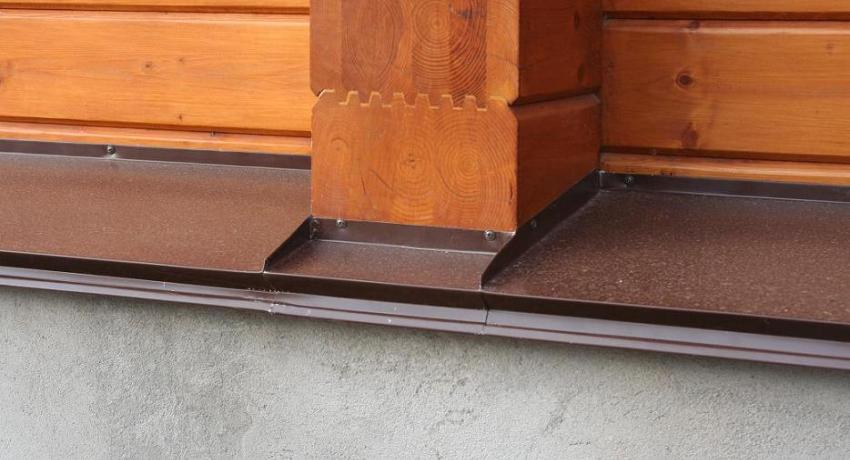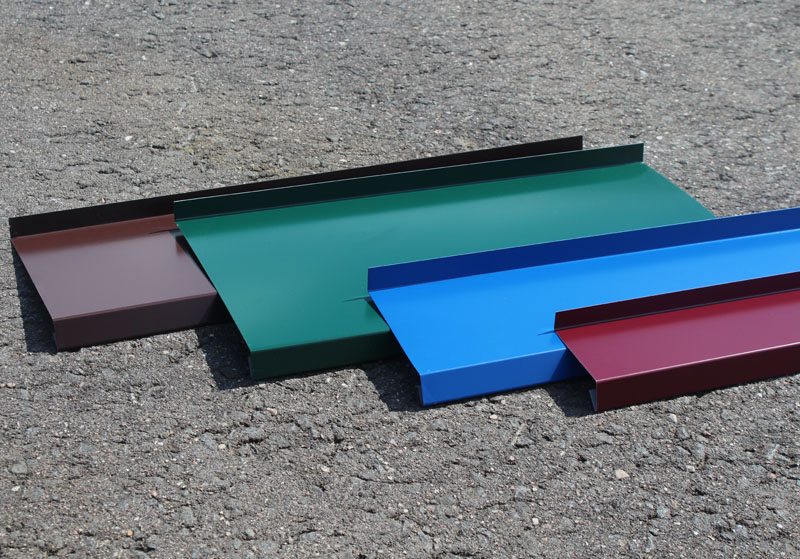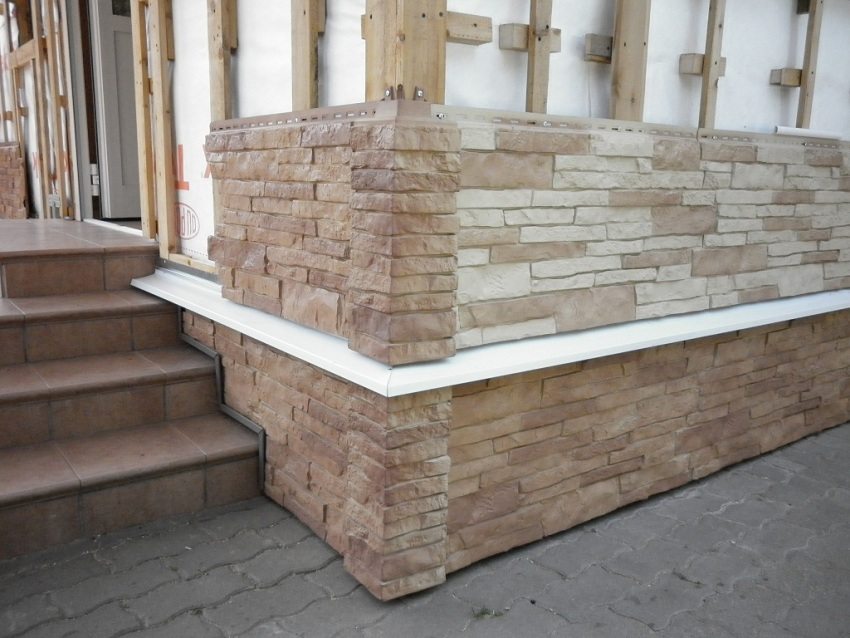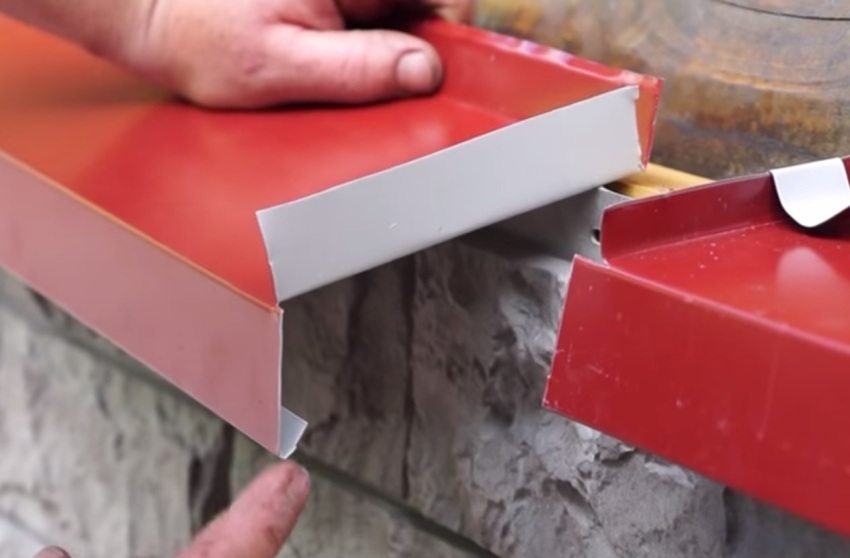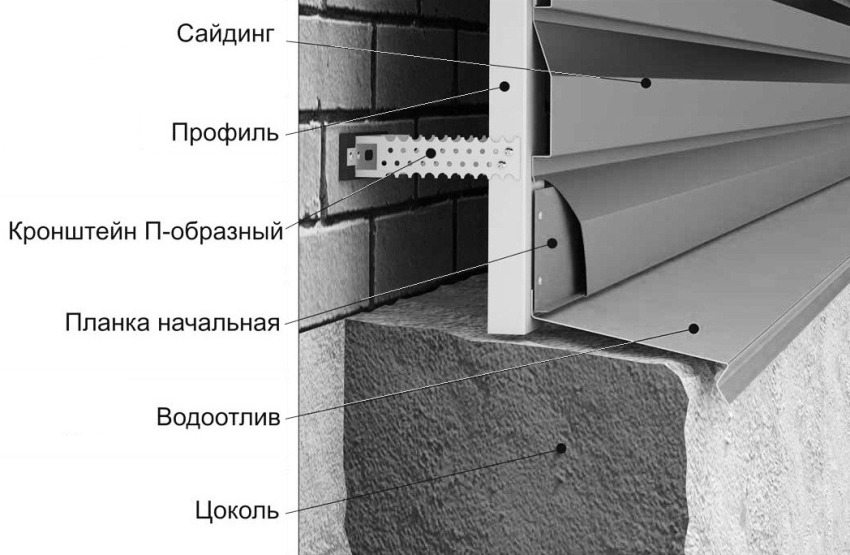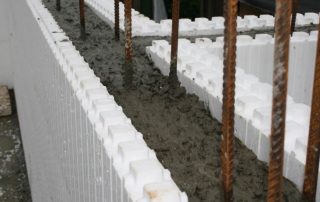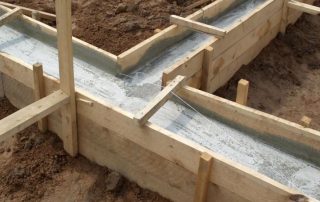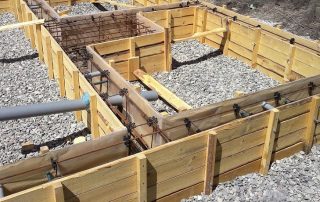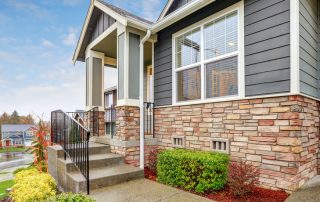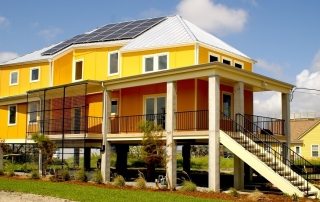The ebb for the basement basement is mounted on the upper part of the base of the house protruding beyond the wall plane. This protrusion is formed due to the fact that the walls are usually thinner than the basement, since the latter, together with the foundation, carries the main load. Water flowing from the walls hits this ledge and accumulates there. Penetrating into the pores of the concrete base, it freezes with the onset of frost and gradually destroys the monolith. To prevent this from happening foundation must be protected from moisture. This is done by covering the ledge with a waterproof slant bar.
Content [Hide]
What are the ebb tides for the basement base
These devices always have the form of a shelf-like strip, the width of which varies from 50 to 400 mm. The plank is installed along the perimeter of the entire base on its protruding part with a slight 5 - 10 degree slope in the direction opposite to the wall. This allows water to drain freely away from the house without hitting the foundation. Ebb tides for the basement base can be made independently from any waterproof materials, or you can buy at a hardware store. The industry produces several types of them:
- plastic drips;
- galvanized steel strips, including painted and polymer coated;
- aluminum and copper;
- concrete products;
- clinker base ebb.
In order to choose the right material for you, you should familiarize yourself with the properties of each in more detail.
Polyvinyl chloride drips
When constructing ventilated facades, lined vinyl siding, you can stop your gaze on the plastic base flaps. They match the material used best in texture. Even the color can be chosen to blend perfectly with the overall background. PVC ebb tides are also prepared to order, so you can get any required size and shape.
A sufficiently long potential for the operating time, as well as good resistance to environmental influences, both climatic and mechanical, makes this material in demand in the construction industry. The plastic has a completely waterproof structure and a reasonable cost.
Helpful advice! When purchasing plastic ebbs, one should keep in mind the fragility of inexpensive models and the inability to make subsequent repairs. If damaged, you will have to replace the entire bar. Therefore, it is worth choosing thicker and stronger products.
Metal base flashing
In this segment of products there is a very large assortment of types.The cheapest ebbs for the basement base are made of galvanized steel, and the most expensive ones have a polymer coating. Some options may have an exclusive look. At the same time, even in the manufacture of the simplest metal castings, great importance is attached to the aesthetic side. After all, this shelf is attached to the facade of the building and should emphasize the lines, creating the effect of completeness of the whole picture.
Related article:
The technology of effective insulation of the foundation with penoplex. Comprehensive insulation of the building foundation using foam boards. Three main methods of warming the foundation.
Outwardly, all metal ebbs are a shelf with bends at the edges. One bend is made upward for attaching the part to the building wall or the frame of the ventilated facade. The second is directed downward and bent inward. This design does not allow water, as a result of the phenomenon of capillarity, to return to the surface of the foundation. The length of the strips is most often 2 m, and the width is from 5 to 30 cm, with a steel sheet thickness of 0.5 - 1 cm. The colors may be completely absent or be absolutely any of those proposed by one or another manufacturer. The cost of such ebb tides per r.m. starts from $ 1. and can reach $ 10 for some models.
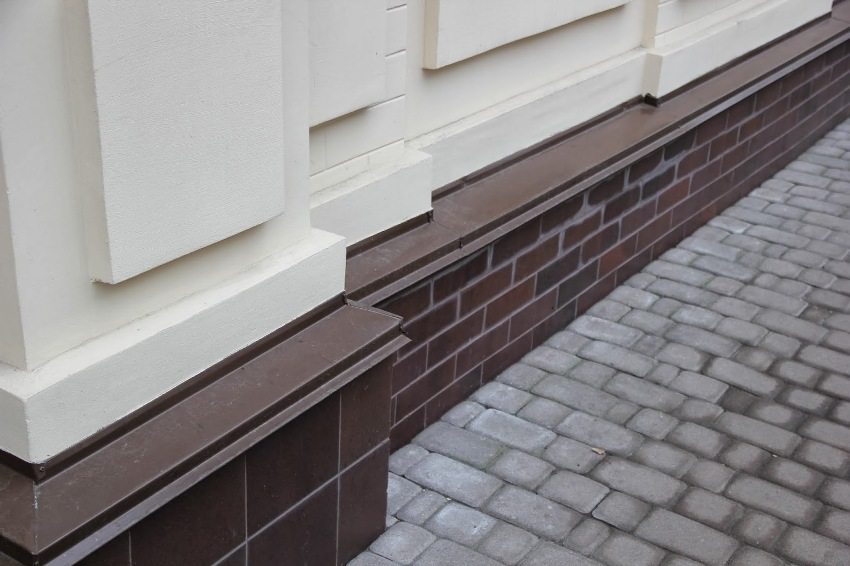
Plinth lined clinker bricks and complemented by a metal ebb
The main advantage of metal ebb strips is their aesthetic appearance, ease of installation and shock resistance. Especially appreciated are aluminum castings, which are much lighter and more durable than steel ones. Electroplating prevents the metal from deteriorating for decades. Copper ebbs for the basement basement today have somewhat lost their former popularity due to the fairly decent cost and the need for constant careful care of them.
The planks are installed on the basement by fastening them with screws or dowels directly to the walls of the building in the place of the upper bend, or on the guides of the ventilated facade. This process is not complicated and is carried out with ordinary hand tools.
Helpful advice!When installing the basement flashing, it is necessary to lay the strips one after the other with an overlap of at least 3 cm. Do not cut off the extreme strip. It is better to cover part of the previous one with it. Trimming the metal will damage the protective layer, which sooner or later will lead to corrosion and destruction of the part.
Concrete ebbs
For monumental buildings, finished with bricks or natural stone, it is preferable to use concrete ebbs for the basement plinth. They have a solid appearance and are guaranteed to protect the foundation of the house from any negative impact from outside. For the manufacture of such ebbs, cement M450 is used. It is frost-resistant and very high quality. River sand and crushed granite are added to the solution. For better plasticity and water resistance, plasticizers are used. The solution is poured into silicone molds, which can have different geometric parameters. At the same time, the surface of the finished products is very smooth and even.
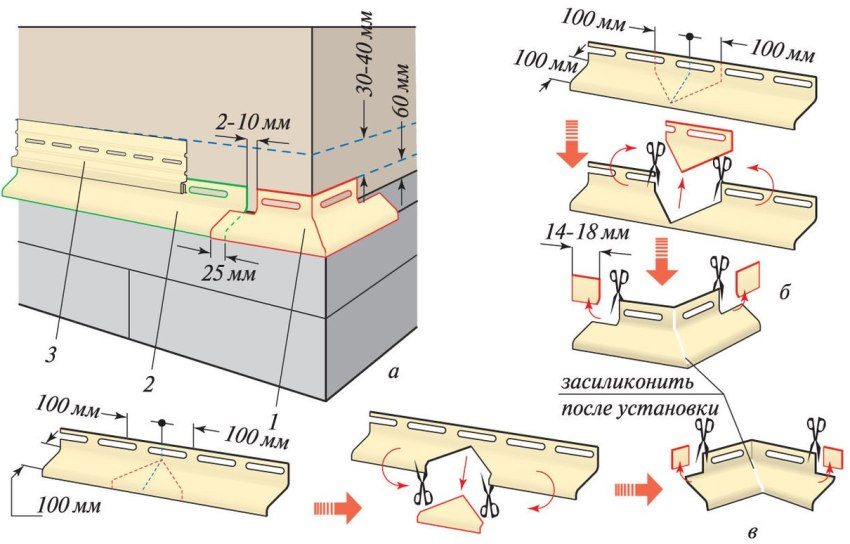
Instructions for installing the ebb and the starting plate in front of the house cladding with vinyl siding: a - general view; b - outer corner; в - inner corner; 1 - outer corner, 2 - low tide; 3 - starting bar
The length of standard forms is 3.9 or 6 m, and the width is made according to the size of the base. The color gamut is quite extensive from manufacturers, but you can order an individual shade. Concrete ebbs have excellent decorative properties, but their installation must be foreseen by the project in advance, since they are very massive. Such ebbs are fixed to a special solution.
Helpful advice! The existing concrete base flush can be painted with any facade paint. This allows you to create a variety of designs for the facade of the building.
Clinker ebb
Often houses are finished with expensive and aesthetic material - clinker tiles. This material perfectly protects the building from any influences from the external environment. It is logical to propose to protect the foundation of these buildings with ebb from the same material. They are produced by the construction industry, and you can buy them in the same place as clinker tiles. It is necessary to plan the arrangement of the foundation with this type of ebb during design. Installation of clinker ebbs requires high professionalism and attention.
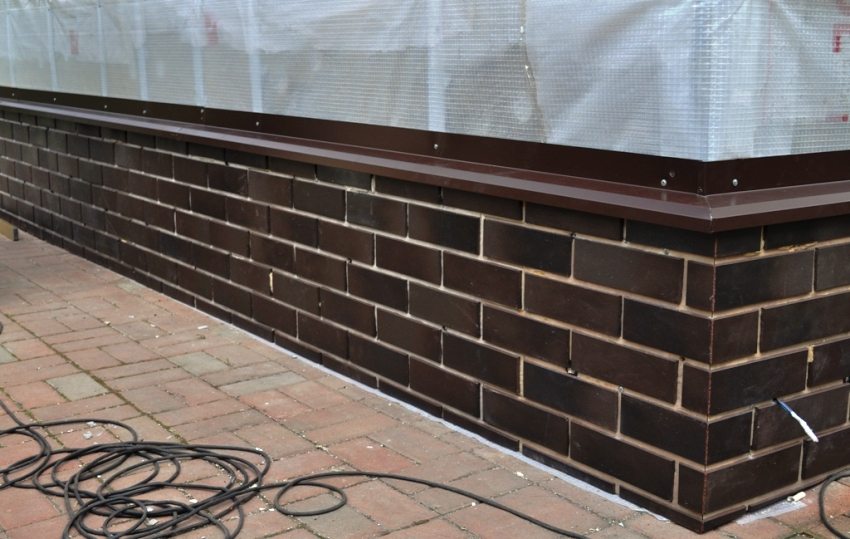
The ebb must be installed before the decorative facade plinth finishes
Despite this, many people choose this type of building facade design. After all, a house sheathed with such material has a fundamental and solid appearance. It clearly emphasizes the social status of its owner.
The main stages of installation of a basement ebb
The ebb is installed in its place before making the facade cladding. The ebb material is chosen so that it is combined with the finishing material of the building facade. For siding, a plastic ebb is made, concrete or clinker ebbs are arranged under brick and stone. Metal canopies are universal, and are suitable for any kind of finishing material. Since metal types of ebbs are most often used in mass individual construction to protect the foundation of a house, let us consider in more detail the features of their installation.
On the horizontal surface of the base, called the grillage, several planks are placed along the entire wall. After alignment, they are fastened together with the smallest self-tapping screws. If the walls of the house are lined with bricks or made of lightweight concrete blocks, then holes are pre-made for attaching ebbs with wooden or plastic plugs. The ebb is attached to them with screws. If the walls are made of wood or the ebb tide needs to be attached to the facade frame, then you need to screw it immediately onto the screws. The joints between the planks can be treated with a sealant to prevent the ingress of liquid through them.
Helpful advice! Use special corners to decorate the ebb tide at the corners of the building. They have a presentable appearance and are sold with slats of the same color and width.
The use of ebbs for the basement of the foundation can significantly increase its service life. In addition, the correct choice of the type of ebb and their high-quality installation greatly improves the appearance of the building, giving it integrity and completeness.
